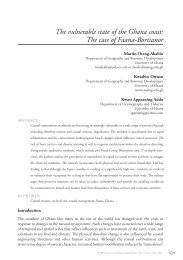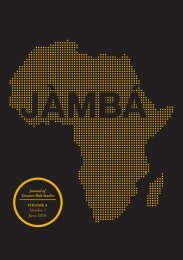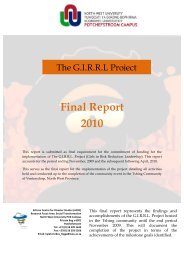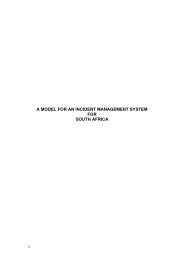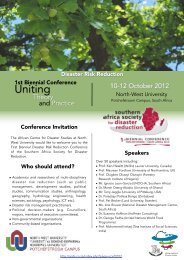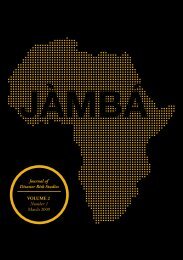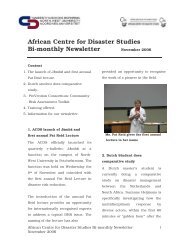Adolescent Girls at Risk - African Centre for Disaster Studies - NWU
Adolescent Girls at Risk - African Centre for Disaster Studies - NWU
Adolescent Girls at Risk - African Centre for Disaster Studies - NWU
You also want an ePaper? Increase the reach of your titles
YUMPU automatically turns print PDFs into web optimized ePapers that Google loves.
<strong>Adolescent</strong> <strong>Girls</strong> <strong>at</strong> <strong>Risk</strong>: The GIRRL Program as a Capacity-Building Initi<strong>at</strong>ive... 239many of the social conditions th<strong>at</strong> challenged the girls, the Life Skills teachers werealso identified as the contact persons <strong>for</strong> each of the project sites.The program facilit<strong>at</strong>ors came from various sectors, although the majorityorigin<strong>at</strong>ed from the North-West University where they were recognized <strong>for</strong> theirinterest in community work and maintain a specializ<strong>at</strong>ion in a discipline of relevanceto the program sessions. These facilit<strong>at</strong>ors volunteered their time to present thevarious session components of the programs. They used their extensive academicexpertise and knowledge to ensure th<strong>at</strong> the session content was of high standardsand th<strong>at</strong> the participants received as much in<strong>for</strong>m<strong>at</strong>ion available regarding thesession topic.The community and participants have a shared responsibility <strong>for</strong> maintaining thecontinuity of the program through cooper<strong>at</strong>ion and open communic<strong>at</strong>ion. The entirecommunity has the potential to benefit from the program participants’ outreach andawareness activities; by improving the resilience of the community’s mostvulnerable members, the resilience of the overall area is increased.Participant SelectionThe participants were selected from a high-risk school (based on socialvulnerability) in each loc<strong>at</strong>ion as identified by the Department of Educ<strong>at</strong>ion. Thedecisions were guided by the advice of the life skills teachers in each of the threeschools; in the South <strong>African</strong> context, it is the Life Skills teacher th<strong>at</strong> works mostclosely with learners and thus has a good understanding of their personalcircumstances.During the identific<strong>at</strong>ion process the following participant criteria were considered:school registr<strong>at</strong>ion st<strong>at</strong>us, m<strong>at</strong>ernal st<strong>at</strong>us, literacy, interest in supporting theircommunity, and poverty. School registr<strong>at</strong>ion was important based on the programgoal to work with the local school not only as a central hub <strong>for</strong> activities but alsobecause the school itself provided a safe entry point to the community. The timedemands of the program would detract from the time available <strong>for</strong> caring <strong>for</strong> theirchildren, which would cre<strong>at</strong>e undue stress, hence girls with children of their ownwere not considered. Literacy was an important factor in understanding thein<strong>for</strong>m<strong>at</strong>ion better and <strong>for</strong> sharing the in<strong>for</strong>m<strong>at</strong>ion with others.Following consult<strong>at</strong>ion with their parent(s) and/or guardian(s), the students wereinvited to particip<strong>at</strong>e in the program. The program description, and ethicalprocedures including in<strong>for</strong>med consent, right to withdraw, and confidentiality wereexplained to parents and students in local languages. Written and verbal consentwere obtained from all guardians and students to confirm their understanding andwillingness to particip<strong>at</strong>e.Participant InvolvementThe girls were not passive onlookers during the program implement<strong>at</strong>ion but r<strong>at</strong>herwere actively involved. The program was based on the Particip<strong>at</strong>ory ActionResearch (PAR) Model, which allowed the participants to help guide the process.Krimerman (2001, 63) offers th<strong>at</strong> PAR:




